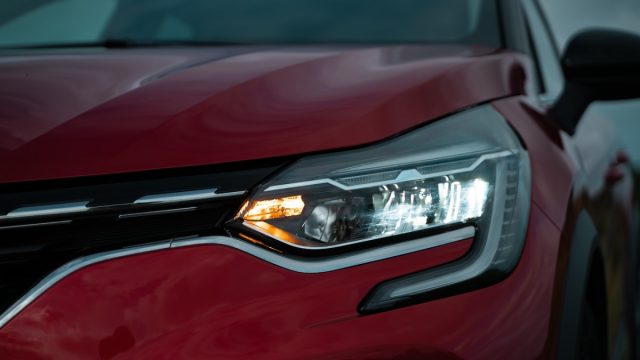Attractive in form and pleasant on the road, the Renault Arkana is a good choice for anyone who wants to stand out in an SUV. All that remains is to choose the right entry-level engine. By launching its SUV, Arkana, Renault has established itself as the precursor of a new segment, compact SUVs, profiled like a coupé. If you want to know the essential information about this SUV, this review of the Renault Arkana is for you!
Renault Arkana Review
The Renault Arkana meets the expectations of the European and even global market, given its success. This coupé SUV was designed using multiple technical bases to adapt to each market’s constraints.
In Europe, the Arkana uses a refined platform. This is the Alliance’s modular CMF-B platform, on which the latest generations of Clio, Captur and other Nissan Juke have already been developed. This offers road feel and driving dynamics far superior to its counterparts dedicated to Eastern European countries, which need more robustness. Arkana offers an SUV with a strong personality, both in its style and engines.
Review of the Renault Arkana-TCE 140, 145 and 160
With the Arkana, as a mainstream automaker, Renault wants to capitalize on the success of coupé SUVs in the high-end segments. Of course, it’s a bit of a wonky concept since you associate a coupe with good looks and sporty performance. But an SUV is supposed to be spacious and practical and is generally less efficient (and burns more fuel) than a “classic” model that sits lower on its wheels and is less bulky and heavy. Arkana 2022 is very elegant, but the same cannot be said for its other models.
The Arkana, derived from the Captur, was only offered with two engines at its launch. The entry-level engine was – and still is – the 1.3 TCe with mild-hybrid technology, which develops 140 hp. In addition, the coupe SUV made in South Korea can be ordered, like the Clio and the Captur, in an E-Tech (non-rechargeable) hybrid version. It combines a 1.6 petrol engine with two electric motors, which produce a combined output of 145 hp.
At the same time, the range has been extended to include a more powerful version of the 1.3 TCe, which offers an additional 20 hp. However, that’s pretty much the only difference since its front wheels are still driven by a robotic seven-speed dual-clutch gearbox. And like the TCe 140, this 160 hp variant can also count on a starter-alternator that converts deceleration energy into electricity using a lithium-ion battery located under the passenger seat, thus giving the engine fuel an extra boost in crucial moments.
The system also only works with a voltage of 12 volts, whereas with the competition, 48 volts is increasingly common for this type of system. Given the modest power, it is clear that Renault wants to relieve the gasoline engine to obtain (slightly) lower consumption and that the intention was not necessarily to improve performances.
So don’t be fooled by the name RS Line, the only trim level in which the Arkana TCe 160 is offered. This means that it comes with a lot of additional standard equipment, such as heated and electrically adjustable front seats, leather-wrapped and heated steering wheel, navigation system, digital instruments, 18-inch wheels and, of course, other interior and exterior trim. To be clear, the E-Tech and TCe 140 hybrid models are also available in this trim level.
Conduct
Arkana is praised for its comfort-handling compromise. Again, the body is well supported, so the car – especially for an SUV-like car – tackles corners nicely flat, yet you pay little or no price for it in terms of comfort. Its neat and well-seated interior makes the Arkana a pleasant companion for short and long trips.
Even with 160 hp under the hood, the Arkana is no sprinter. Logically, it’s a little faster than the 140hp version (which only manages to stay under 10s for the 0-100km/h sprint), but we don’t feel like we’re stuck with the seat. It’s meant more for smooth riding than truly sporty driving, though we have to admit that its little four-cylinder doesn’t sound bad when called upon. However, compared to less powerful versions, you’ll notice that the front end sometimes has to struggle to find grip on slightly wet road surfaces, especially when you accidentally give too much throttle while turning.
And that sometimes happens because, in standard driving mode, the management of the gearbox is so focused on comfort that you would swear to be dealing with a classic automatic gearbox whose torque converter slips heavily to avoid shocks. This lack of responsiveness can also be annoying during maneuvers. Sport mode takes care of that, but it can be a bit jerky in city traffic. However, once in motion, regardless of the drive mode selected, there’s little to fault the EDC gearbox for, as it shifts gears sensibly and smoothly.
Conclusion!
The commercial offer of the Renault Arkana is not so dense. And that’s a good thing since, by limiting the number of engines and finishes, Renault can thus standardize its production and limit assembly costs. The regrettable factor is the lack of 160 horsepower plug-in hybrid powertrain already present in the Megane and Captur E-TECH Plug-in. It would have suited this SUV perfectly for daily trips. Therefore, the hybrid version, the Arkana E-TECH, is recommended if you make many trips to urban areas. This is where it takes on its full meaning.
On the other hand, if you don’t travel too much in town and do more country roads, the Arkana TCe 160 EDC will be a much better companion. Lighter in the front axle, it offers road holding more in keeping with its style. In any case, we recommend the RS Line finish, which gives it much more presence.


